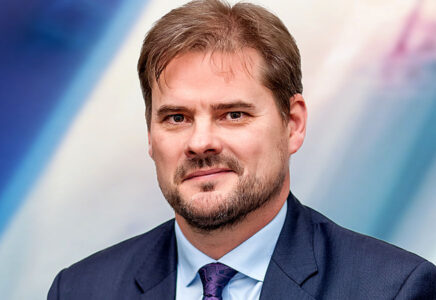With the US representing an estimated 46% of the global equity market, its upcoming shift to T+1 settlement in 2024 is a huge move. But there are fears that fund managers are nowhere near ready for the 2024 deadline. We talk to the industry regarding the significant concerns around lack of awareness, lack of technology and lack of preparation.
According to the Federal Reserve, in 2021 foreign purchases of US stocks amounted to $30.62 trillion while selling $30.56 (figures as of April 2022). The US represents 46.2% of the global equity market. So how the US and Canada structure their markets will have wide-ranging consequences across the globe. But in many markets – including Europe – preparations are by no means as advanced as they need to be, especially across smaller players, where a lack of awareness could lay them open for serious problems ahead.
“Wealth and fund managers in general, at least those outside of the T+1 migration regimes, are highly negative in sentiment,” said a new working paper published on 30 May, based on research undertaken by ISITC (International Securities Association for Institutional Trade Communication) EUROPE and written by ISITC EUROPE and Ulster University (commissioned by the SWIFT Institute). “They struggle to see how the benefits accruing to brokers and custodians will reach them and their customers while they see themselves as facing new operational costs and new operational risks.”
According to a recent ValueExchange survey in partnership with DTCC and industry groups, covering more than 280 institutions, over 40% of respondents have not yet begun planning for T+1 whilst almost two thirds of buy-side firms are unprepared for the transition, primarily across mid-tier and boutique organisations. But while knowledge of the T+1 challenge remains “very poor” amongst smaller firms, according to the ISITC report, the matter is becoming urgent.

“If anyone thinks this doesn’t affect them, they’re wrong,” agreed Adam Conn, head of trading at Baillie Gifford, speaking to Best Execution. “There may be firms that think it doesn’t apply to them because they are not regulated by the SEC, but that is simply not the case”
Increased operational burden
The increased operational burden on market participants is a key issue. Increasingly participants are having to execute complex instructions in a very short time period – and with a shorter settlement period, there is less time to complete the necessary paperwork and processes to settle a trade. This is a particular challenge for smaller firms. There is also a risk of increased errors in settlement as the settlement cycle shortens, which can lead to delays and additional costs. This challenge is even greater for firms in mismatched time zones where time sensitive settlement activities could take place into the early hours of the morning. “In such instances, there is no flexibility to delay these functions until normal office hours as the slot for that activity (for example matching and affirmations of trade) will be closed,” notes the ISITC analysis.
The Association for Financial Markets in Europe (AFME) has estimated that the real reduction in time available to settlement trades in a T+1 environment vs a T+2 environment is much more dramatic than it might first appear – in reality, reducing the settlement operations window by 83%.
“In a T+1 environment settlements teams only have two core business hours between the end of the trading window and the start of the settlement window, compared to 12 core business hours in a T+2 environment” AFME warned in a 2022 report.

“Financial institutions need to look at T+1, and the resulting increase in trade settlement fails, as part of a longer-term goal to achieve greater settlement efficiency,” said Daniel Carpenter, CEO of Meritsoft, speaking exclusively to Best Execution.
“Many institutions we speak to are also looking at fails management for T+1 related fails as a continuation of the processes they implemented to improve settlement efficiency for CSDR. European operations teams with experience of CSDR are heavily involved in the planning for T+1 at their organisation as a result. Building on what we did for CSDR, Meritsoft is helping operations teams answer questions such as ‘how do we allocate who’s at fault?’, ‘why did the trade fail?’, and ‘who missed the mark?’, in order to create strategic remedial processes.”
Timezone trouble
As it currently stands, the new North America T+1 settlement cycle will require trade affirmation (matched and confirmed as correct and ready for settlement) by 9pm Eastern Time (ET) to prepare for the settlement process (as confirmed by DTCC). This has the potential to create a significant timing challenge for non-domestic investors into the US. Because 9pm ET equates to 3am in Frankfurt, this means that any exceptions, challenges or settlement issues would have to be either dealt with via night shift staff, or discussed with the fund manager who initiated the trade (who might not be available at that hour), leading to an increased potential for settlement failures.
Pre-funding problems
Pre-funding is another cause for concern. Often necessary when buying or selling securities or assets across different countries or currencies, the FX requirements involved can add significant complexity to overall liquidity management. Because pre-funding arrangements need to be made in advance of any settlement to ensure the necessary funds are available, this demands both accurate coordination and communication across all parties: from investors to brokers to custodians, clearing houses, and settlement agents. Accelerated T+1 settlement significantly compresses the timeline for this coordination, presenting some notable challenges.
“Proper coordination, communication, and adherence to cut-off times, deadlines, and operational processes are essential,” said the ISITC analysis. “While some issues can be engineered out, at a price, challenges such as foreign exchange and the potential cost of pre-funding (or the cost of deciding not to pre-fund and have periods out of the market often imposed on their customers), cannot be readily engineered out of the business.
“There is a need for the buy-side industry, especially the non-domestic buy-side firms who actively buy into and trade the US equity markets, to model the costs of pre-funding to establish what the net improvements from acceleration actually are for them and for the US economy.”
Possible answers
It is still not clear how non-domestic buy-side firms will manage the challenge, especially around the timezone issue. “European concerns are that some operations and even some trading activity will move to the US or Canada, given that wealth and fund managers cannot simply ignore the US market,” found the ISITC. One German fund organisation that took part in the survey noted that the industry in Germany has larger investments in US equities than in German equities. The US cannot be excluded as a destination for funds simply because it is more expensive to operate there. “Such a migration of activity to the US would not be popular among European politicians and would create a strange split where customer funds would be covered by one set of regulators and the consequential trading covered by another regulatory regime,” pointed out the report.
One solution could be a dual settlement window. Currently, the securities processing service of the Trans-European Automated Real-Time Gross Settlement Express Transfer (TARGET2) system has two securities settlement windows: a real-time window, and an overnight window. Adding a settlement window which better allows for non-domestic time zones to settle could ease non-domestic market participation.
Another suggestion, made by the Canadian Capital Markets Association (CCMA) earlier this year, is that the overnight cut-off time for settlement could be changed to 4am for T+1. This means that instead of by 9pm ET, the threshold could be moved to 3.59 ET on T+1, meaning that the start of the next-day settlement process would begin at 9am in London, or 10am in Frankfurt. The window to resolve exceptions and perform reconciliations would still be early and much shorter, but it would be far more accessible for international investors.
Technology
Technology is a crucial issue that sits at the heart of the acceleration issue. Enabling firms to address the demand for straight-through processing is essential not only for compliance, but in terms of efficiency and operational risk reduction.
“Shifting as much of the industry to automated matching and affirmation systems as possible, removing unstructured instructions across the board and as soon as possible ending the role of paper certificates and payments from the system will improve compliance and reduce costs,” recommended the ISITC report.
However, many firms outside of the US have made a slow start on project planning, which is described as “very concerning”, as failure to put in place the changes needed to meet the new requirements will inevitably lead to increased fails and thus, additional costs, for international investors into North American markets.
The analysis shows most fund managers believe they have systems already capable of real-time reporting, while many take comfort in their existing ability to trade in established T+1 markets such as US treasuries. Custodians and brokers, found the survey, also have well advanced real-time capabilities and believe themselves to be well set up for T+1 equities processing. However, one large global fund manager pointed out that while they were ready for accelerated settlement from a technology perspective, many smaller firms were not – and have yet to fully automate their trade instructions.
“We already have real-time communication with custodians, we already have real-time communication with the brokers. There isn’t really a delay on our processes that we could address that will make the whole process better. [But] there are smaller organisations out there that don’t use all the platforms available to make the process more streamlined, and they don’t have all the controls and the processes in place like we do.”
And firms need to be aware that without preparation, increased trade fails could cost them dearly.
“Having a platform that can deliver data and transparency for everything about your trade fails is essential for understanding where efforts should be focused in an increasingly compressed settlement timeframe,” urged Carpenter, speaking to Best Execution.
“In the countdown to T+1 implementation for the US, systems for routing and processing trade fails need to be updated with a strategic goal of improving settlement efficiency across the bank’s different regional hubs and desks, as well as establishing how to handle increasing fail volumes.
“The significantly higher costs from interest rates on claims charged for trade fails should act as a very motivating factor to take a strategic global approach to optimising fails operations today.”
Don’t delay
The SWIFT report highlighted that many firms expressed both “a lack of knowledge of the proposed changes and deep concerns about the timetable” – notably smaller non-US registered buy-side firms, which had little knowledge about the challenge of T+1, which in turn made them doubtful as to their ability to deliver timely implementation of new technology.
Now that the SEC has confirmed a migration completion date of 28 May 2024, many firms will be under serious pressure to get started – and significant resources will be needed. One global US-owned fund manager revealed that they already had 28 workstreams exploring multiple aspects of the required changes – a telling illustration of the scale of challenge for those firms yet to embark on their own migration plans.
According to one smaller UK-based wealth manager: “There’s a lot of technology improvements many firms will have to make. If you go over to T+1 you’re looking at… automation across the board really, if you want this to work properly, and that will not go in overnight.”
Another global custodian, talking about wealth and fund manager clients (but speaking before the final data was announced), warned that: “If the US is serious about bringing this in 2024, I’m not seeing anybody making dollar investments in their core platforms yet.”
A temporary reprieve
If you are one of the firms that is not quite ready yet, don’t panic – all is not lost. While the SEC has made it clear that the new T+1 system is an operating model, which it expects firms to adhere to, there is still a case for ad hoc settlement, provided it is agreed before a trade is executed. But it’s not an ideal (or a long-term) solution.
“As I understand it, ad hoc T+2 and even T+3 settlement will still be allowed, but any systematic attempt to continue trading at T+2 will undoubtedly raise the ire of the regulator,” agreed Conn. “In any event, any deviation from T+1 will need to be requested ahead of placing the trade.”
“In terms of cost of execution, when settlement is delayed, you’re effectively asking your custodian or the executing broker for credit. It’s going to create a lot of friction for those firms that choose to attempt it.”
A global approach
With both the UK and Europe well on their way to evaluating their own acceleration, it will pay to act now rather than later. The UK has already established the Accelerated Settlement Taskforce (HM Treasury December 2022) – something that many believe should be relatively achievable given the central nature of the markets and the existing CREST settlement system.
In mainland Europe, AFME has set up its own working group but a move towards T+1 could face more difficulties due to the fragmented nature of the markets, along with the sheer number of market participants (41 trading exchanges, 18 central clearing counterparties and 31 central securities depositories at last count).
What next?
That doesn’t mean firms shouldn’t start planning ahead.
“Start now,” urged Conn. “It’s less than a year till the planned implementation. I would suggest that if they haven’t already done so, all firms should speak to their custodians, speak to some of the major executing brokers in North America, and understand what options are open to them and what the consequences will be if they don’t adequately prepare for the shift.”
©Markets Media Europe 2023
©Markets Media Europe 2025








